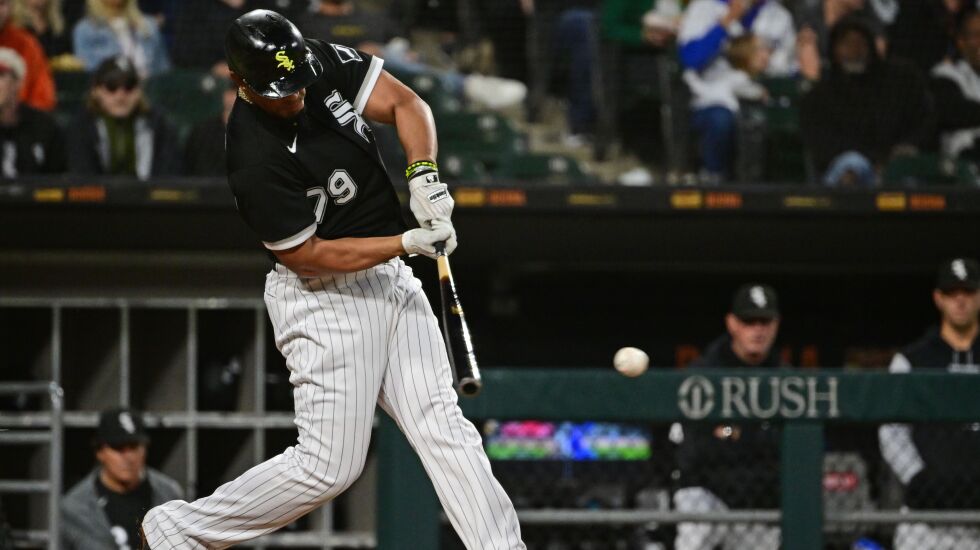
Major-league teams have averaged 4.34 runs per team per game through Sunday, down from 4.53 in 2021. It’s the lowest average since 4.25 in 2015.
One factor: Hitters aren’t reaping rewards as large as usual for the same quality of contact.
White Sox first baseman Jose Abreu is a prime example. His .431 slugging percentage is well off his career .510 percentage, but he’s still driving the ball. Using exit velocity and launch angle as a base, baseballsavant.mlb.com lists his expected slugging percentage at .575.
To take in Abreu’s full offensive game, Baseball Savant lists weighted on-base average (wOBA). It assigns weights to everything from home runs to double plays, much like weighted runs created plus. Unlike wRC+, however, a hitter’s wOBA isn’t normalized to a scale where 100 is average.
Abreu’s .353 wOBA is well above the major-league average of .310 but well below his .413 expected wOBA (xwOBA).
It’s not just Abreu. Hitters throughout the majors are seeing such negative gaps.
The expected major-league slugging percentage of .438 towers over the actual .393 percentage. The xwOBA is .329, 19 points higher than the actual wOBA.
This is not business as usual. Since expected stats were unveiled in 2015, they’ve tracked much closer to results. Gaps mainly have been in underestimating, rather than overestimating, hitter outcomes.
In 2021, the .411 major-league slugging percentage topped the expected percentage by four points and the .314 wOBA trailed the xwOBA by three. Actual slugging percentage topped the expected percentage every season until this one, but the only gap wider than 11 points was the first data year (.405 actual slugging percentage vs. .370 expected slugging percentage in 2014).
The wOBA/xwOBA gap never has been wider than three points, with wOBA higher five times and xwOBA twice. The 19-point gap in 2022 is a quantum leap.
Gaps work the opposite way for pitchers, of course. Pitchers are giving up fewer extra bases than the quality of contact against them suggests.
Sox right-hander Michael Kopech has allowed a mere .250 slugging percentage and .238 wOBA, but the quality of opponents’ contact puts .399 and .309 in the ‘‘x’’ files. His 2.58 ERA comes despite an expected ERA of 3.48.
Right-hander Dylan Cease, on the other hand, has had normal results, with opponents’ .318 slugging percentage and expected slugging percentage, .277 wOBA vs. .266 xwOBA and 2.56 ERA vs. 2.54 expected ERA.
Why is 2022 so far out of line compared to expected stats since 2015? That’s an open question. Can defensive positioning have improved so much in one season to take away that many bases? Not likely. Is the ball different, or are storage and mud-rub differences having an impact? Have winds and weather patterns cut down on slugging? Is this all just a fluke, with normal patterns to resume?
While we await study and answers, the Yankees’ Aaron Judge has a .643 slugging percentage but is hitting the ball hard enough for .751. At a lower level, the Athletics’ Christian Bethancourt is slugging only .396, but data suggests a whopping .585. The Cubs’ Willson Contreras is at .494 instead of the expected .535.
And Abreu, with his 144-point slugging shortfall, been slugging without the rewards.







